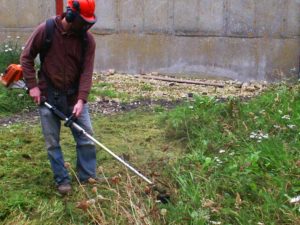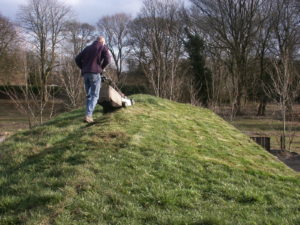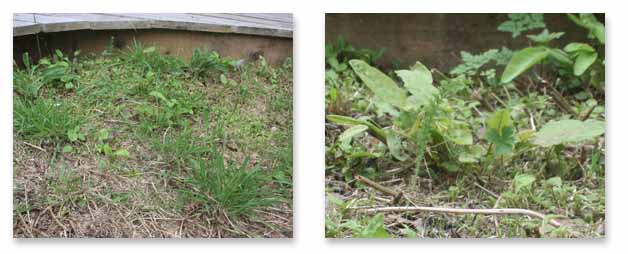Once established our Wildflower Turf requires very little maintenance, however, there is one important task to carry out each autumn.
No two meadows will grow in exactly the same way or even at the same rate, with the mix of flowers and grasses that flourish possibly varying year on year. The dry start to Spring saw many meadows not flourish until mid May but with feels like continual rain since July, many meadow are still fairly green. However, whilst your meadow may still have some flower power left you are likely to be thinking about cutting it down if you haven’t already done so.

Cutting can be achieved by either using a scythe, hedge trimmer or strimmer and raking the clippings off to compost, or by using a mower and collecting the cuttings as you go. A good motor mower on a high setting would be fine but for larger areas, a professional mower such as a Profihopper is ideal. Which ever method you choose, make sure the tools are sharp and try to minimize trafficking. Cutting the plants back to 1 to 2 inches (25mm to 50mm) in length is a vital part of their life-cycle and ensures that re-growth will continue year on year. The most important part of this maintenance cut is to make sure you take all of the clippings away. In order to control grasses in your meadow, nutrient depletion is vital and any rotting material left on the meadow will only enrich the soil.


If you have not already done so, the cutting of your meadow should ideally take place over the next month or so when the wildflowers have set and shed their seed. Not only does this tidy up the area for the winter but it stops the senesced summer growth from covering the growing plant in a layer of rotting plant material. An open sward over the winter ensures healthy, disease free plants which can benefit from what light is available to them during these months.You can use your own judgement on exactly when to cut the meadow. If you still have some flowers clinging on to the hope that summer is not yet over, and the bees and insects are still utilising them for a late food crop of nectar, then you may want to leave cutting until perhaps the end of September/beginning of October. This is also beneficial to many invertebrates.
When you do decide to give your meadow its annual cut, it is always advisable to choose a dry sunny day to cut the meadow back. Dry cuttings are easier and cleaner to handle. You may find that your meadow starts to grow again. This is because some species will be quick to utilise any freshly created space, thus taking advantage of the new opportunity that they have been given. Most notably the species that you will probably see are plantain, campion, wild carrot, yarrow, sorrel, ox-eye, as well as some grasses. This is absolutely fine, it is the last chance it has to green-up ready for the winter when it will go dormant.

If you have a larger sized meadow, it is a good idea to cut in stages to be kinder to the wildlife and allow any mammals or insects to translocate to a neighbouring strip, that is left for a month or so longer.
As the spring approaches the wildflowers and grasses are in the perfect position to develop flowers and seed heads quickly to repeat their perennial cycle thus guaranteeing a wildflower meadow year after year.
I hope you have a lovely bank holiday weekend and if it stays fine enough perhaps show your meadow some love. You can always post your pictures on our facebook page, we would love to see any meadow pictures you have.